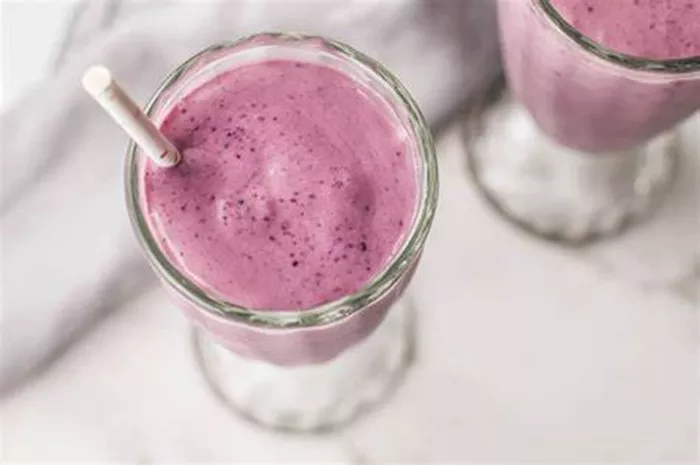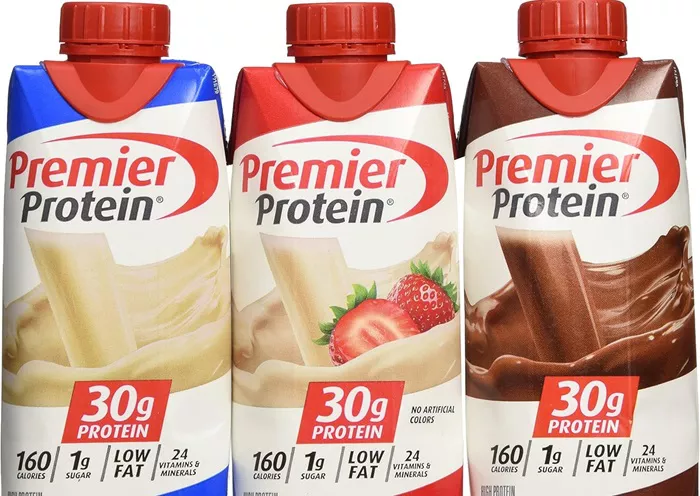Protein shakes have become a popular choice for individuals looking to lose weight, largely due to their convenience and ability to help control hunger. However, to maximize their effectiveness for weight loss, it’s important to consider what additional ingredients can enhance their nutritional profile and support your weight loss goals. This article explores various components that can be added to protein shakes, detailing their benefits and how they contribute to a successful weight loss strategy.
Protein Shakes and Weight Loss
Protein shakes are typically made by mixing protein powder with a liquid, such as water or milk. They can serve as meal replacements or snacks, helping to increase protein intake while potentially reducing overall caloric consumption. Protein is crucial for weight loss as it helps maintain muscle mass, boosts metabolism, and enhances feelings of fullness.
When combined with a balanced diet and regular exercise, protein shakes can support weight loss efforts. However, simply adding a protein shake to your diet without considering other ingredients may not yield the desired results. The addition of various components can improve the taste, texture, and nutritional value of your shake, making it a more effective tool for weight loss.
Key Ingredients to Add to Protein Shakes
1. Fruits
Adding fruits to your protein shake not only enhances flavor but also provides essential vitamins, minerals, and fiber. Here are some great options:
Berries: Strawberries, blueberries, and raspberries are low in calories and high in antioxidants. They can help reduce inflammation and provide a natural sweetness to your shake.
Bananas: Bananas add creaminess and are a good source of potassium, which is important for muscle function. They also provide natural sugars for energy.
Spinach or Kale: Leafy greens are low in calories and high in nutrients. Adding a handful of spinach or kale can increase the nutritional density of your shake without significantly adding to the calorie count.
2. Nut Butters
Nut butters, such as almond or peanut butter, can add healthy fats and protein to your shake. They help increase satiety and provide a rich, creamy texture. However, be mindful of portion sizes, as they are calorie-dense. A tablespoon is usually sufficient to reap the benefits without overloading on calories.
3. Seeds
Seeds like chia, flaxseed, and hemp seeds are excellent additions to protein shakes. They are rich in omega-3 fatty acids, fiber, and protein. Chia seeds, in particular, can absorb liquid and expand, aiding in feelings of fullness. Flaxseeds are known for their potential to improve digestive health.
4. Vegetables
Incorporating vegetables into your protein shake can enhance its fiber content and provide additional nutrients. Consider adding:
Cucumbers: Low in calories and hydrating, cucumbers can add a refreshing taste to your shake.
Carrots: Carrots are high in beta-carotene and fiber, contributing to a nutritious shake.
5. Greek Yogurt
Greek yogurt is an excellent source of protein and probiotics, which can support gut health. It adds creaminess to your shake and can help keep you full longer. Opt for plain, unsweetened varieties to avoid added sugars.
6. Oats
Adding oats can increase the fiber content of your protein shake, promoting fullness and aiding digestion. Rolled oats blend well and provide a slow-release source of energy. A quarter cup is a good starting point.
7. Cocoa Powder
For chocolate lovers, unsweetened cocoa powder can add a rich flavor without added sugar. It is low in calories and high in antioxidants, making it a guilt-free addition to your shake.
8. Coconut Water or Almond Milk
Instead of using regular milk or water, consider using coconut water or unsweetened almond milk. Coconut water is hydrating and contains electrolytes, while almond milk is low in calories and can add a nutty flavor.
9. Spices
Spices like cinnamon, ginger, or turmeric can enhance the flavor of your shake and provide additional health benefits. Cinnamon can help regulate blood sugar levels, while ginger and turmeric have anti-inflammatory properties.
10. Protein Powders
While protein shakes already contain protein, selecting the right type of protein powder is essential. Options include:
Whey Protein: Quickly absorbed and effective for muscle recovery.
Casein Protein: Slowly absorbed, making it ideal for overnight muscle repair.
Plant-Based Proteins: Options like pea, hemp, or brown rice protein are great for those following a vegan diet.
Creating a Balanced Protein Shake for Weight Loss
To create a protein shake that supports weight loss, aim for a balance of protein, healthy fats, and carbohydrates. Here’s a simple formula to follow:
Base: Start with a protein powder of your choice.
Liquid: Use water, unsweetened almond milk, or coconut water.
Fruits and Vegetables: Add one serving of fruit (like berries or banana) and a handful of leafy greens (like spinach).
Healthy Fats: Include a tablespoon of nut butter or a tablespoon of seeds.
Fiber: Consider adding oats or chia seeds for additional fiber.
Flavor Enhancers: Use spices or unsweetened cocoa powder to enhance flavor without added sugars.
See Also: Is It OK to Replace Breakfast with a Protein Shake?
Sample Protein Shake Recipes for Weight Loss
1. Berry Spinach Protein Shake
- 1 scoop of vanilla protein powder
- 1 cup of unsweetened almond milk
- 1/2 cup of mixed berries (fresh or frozen)
- 1 handful of spinach
- 1 tablespoon of chia seeds
Blend all ingredients until smooth. This shake is rich in antioxidants and fiber, making it a great choice for weight loss.
2. Chocolate Peanut Butter Banana Shake
- 1 scoop of chocolate protein powder
- 1 cup of unsweetened almond milk
- 1/2 banana (frozen for creaminess)
- 1 tablespoon of natural peanut butter
- 1 tablespoon of cocoa powder
Blend until creamy. This shake is satisfying and delicious, perfect for curbing cravings.
3. Green Protein Smoothie
- 1 scoop of plant-based protein powder
- 1 cup of coconut water
- 1/2 cucumber
- 1/2 apple
- 1 handful of kale
- Juice of half a lemon
Blend until smooth. This refreshing shake is hydrating and packed with nutrients.
Tips for Using Protein Shakes for Weight Loss
Meal Replacement: Use protein shakes as meal replacements for one or two meals a day, but ensure the rest of your diet is balanced and nutritious.
Watch Portion Sizes: Be mindful of the ingredients you add, as they can quickly increase the calorie count. Stick to recommended serving sizes.
Stay Hydrated: Drink plenty of water throughout the day, especially if you’re consuming protein shakes, as they can be dehydrating.
Listen to Your Body: Pay attention to hunger cues. If you find yourself feeling hungry shortly after a shake, consider adding more fiber or healthy fats.
Combine with Exercise: For optimal weight loss results, combine protein shakes with a regular exercise routine, including both cardiovascular and strength training.
Conclusion
Incorporating protein shakes into your weight loss plan can be an effective strategy when done thoughtfully. By adding nutrient-dense ingredients such as fruits, vegetables, healthy fats, and fiber, you can create shakes that not only taste great but also support your weight loss goals. Remember, the key to successful weight loss is a balanced approach that includes a variety of whole foods, regular physical activity, and mindful eating habits.
[inline_related_posts title=”You Might Be Interested In” title_align=”left” style=”list” number=”6″ align=”none” ids=”9952,9727,9650″ by=”categories” orderby=”rand” order=”DESC” hide_thumb=”no” thumb_right=”no” views=”no” date=”yes” grid_columns=”2″ post_type=”” tax=””]



































